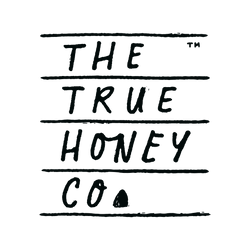
Industrious honeybees make honey from plant nectar and store it in their hives to eat while flowers aren’t blooming. And luckily, they work so hard that they make too much. And in exchange for giving bees a safe, cosy hive, our beekeepers can harvest some of that honey. But what exactly happens during a Mānuka honey harvest?
Timing is everything (but so is placement)
At The True Honey Co., our intrepid beekeepers started placing our hives onto quality Mānuka blocks in August at the very top of the North Island. Flowering finished on our late blocks in the Taranaki region around the beginning of March.
Our beekeepers need to figure out the best time to harvest, to make sure that only the purest Mānuka honey is collected. This means the hives need to be removed for harvesting just before the Mānuka finishes flowering, so the bees aren’t tempted by other flowers for their nectar.
Climate and weather over summer can really affect the harvest, including both the quality and quantity of honey. And a spot of particularly nasty weather can affect the logistics of harvesting. In general, climatic conditions in our hive locations influence the timing and number of Mānuka blooms and determine the potency of the Mānuka honey harvest. This is because our busy honeybee will fly up to 6km each day to forage for nectar. So, depending on how much Mānuka is blooming in her flight path, she may have to supplement her diet with nectar from other flowers.
Weather conditions during flowering also have a direct impact on quantity. The hotter and more settled the weather is during flowering the more honey that will be produced.
The great bee escape
The next step is to remove the hives from each Mānuka block. Our hives are placed in some of the most remote, pristine areas in New Zealand. And the only way to access many of these far-flung spots is by helicopter.
We start work at daylight on the removal day, beginning by closing all of the doors on the hives that are planned to be removed on the day, this ensures that the bees are kept safe and sound. The hives are then flown to a harvest site, chosen for being nice and sheltered with good truck access. There, we’ll unhook the hives, open the doors to check that the colonies are healthy, and smoke the bees to keep them calm as they get used to their new (temporary) surroundings.
We also fit each hive with an ‘escape board’. This acts as a one-way valve between the honey boxes and the brood box or living area in the hive. These are left in place for 24 hours – giving the bees time to move down into the living area – and separating the bees from the honey. Our beekeeping team returns with smokers on hand to harvest the honey boxes from the top of the hive. This gentle method causes minimal stress or disruption to the colony.
The next day, our beekeepers will come back and swap the full honey boxes with empty ones, so the hives are ready to be placed onto the next Mānuka Block. Full honey boxes are carefully put on a pallet, wrapped and labelled with the specific block where the honey was harvested and delivered to our extraction facility, where we let it gently warm up for a few days before it’s extracted from the honeycomb. We always leave some honey in the hive as it’s loaded with vitamins and minerals essential for good bee health. In fact, we deliberately produce extra honey in the shoulder season, to set aside for feeding the bees in winter and early spring.
The honey is extracted
Honey frames go into a honey loosener, to make extraction easier, and then into the extractor. This spins the frames in both directions, using centrifugal force to remove honey from the cells. The honey is then rewarmed, filtered and pumped into a tank, for decanting into large drums – which each has a unique identifier. We send samples from each of these drums to an independent laboratory for testing. The Mānuka honey is stored under temperature-controlled conditions for 9-12 months to develop its uniquely beneficial qualities.
Before we put the honey into our glass jars, it’s separated into different MGO/UMF™ levels. Some honey drums may be blended to get exactly the right levels before being creamed. Creaming stabilises the honey, so it has a nice smooth consistency and won’t go sugary as easily. Then the honey is poured, labelled, boxed and ready to travel the world.
How much and how often?
There are plenty of factors that influence the total yield of a hive each season. The big three are the health of the colony, weather condition during flowering and how well the Mānuka bush blooms. A Mānuka bush will usually flower for 4-8 weeks each year. During that time, a hive can produce anywhere from no honey up to 100kgs in a truly bumper season – although the average would be more like 10-30kg.
To make sure we can always make enough high MGO/UMF rated Mānuka honey for honey lovers around the world, we place hives across New Zealand. This means that bad weather in one region won’t affect the total harvest amount too much. We can also harvest more than one crop each season. On average we are producing 1.8 harvests per hive. So it’s not just our bees that are busy!

